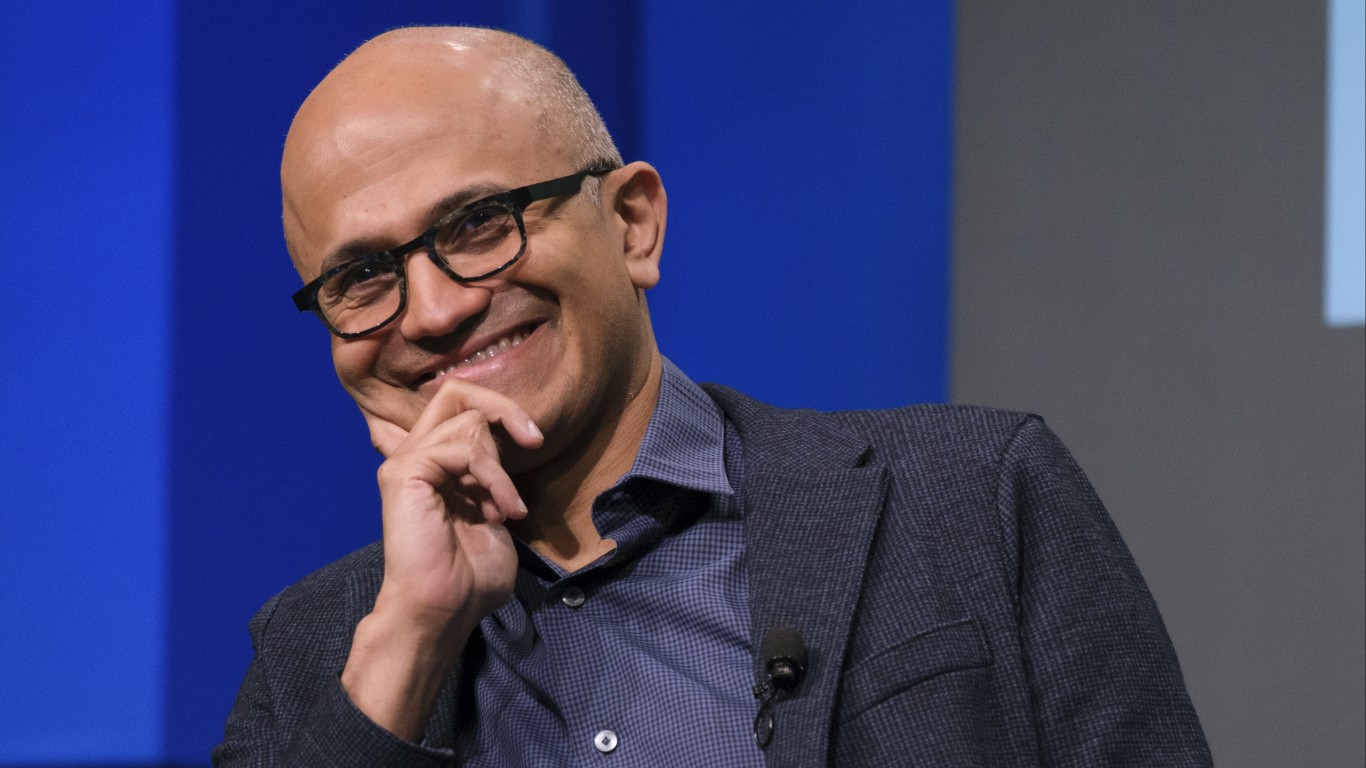
In mid-morning trading Monday, the Dow Jones industrials were up 0.04%, while the S&P 500 traded down 0.53% and the Nasdaq down 1.24%. A decent start at the opening bell deteriorated into a mega-cap-led downturn.
Before markets opened, GE Healthcare reported better-than-expected earnings per share (EPS) and revenue for its fourth quarter. The newly public company also issued upside fiscal 2023 EPS guidance, ranging from $3.60 to $3.75, well above the current consensus of $3.28. Shares traded down about 5.2% Monday morning.
Alliance Resource Partners easily beat consensus estimates for both revenue and EPS. The coal producer also raised its quarterly distribution to shareholders by 40% to $0.70 per common unit. Shares were up nearly 11%.
Li-Cycle missed estimates on both the top and bottom lines. In its press release, the lithium battery recycler did say that it had “progressed significantly towards meaningful debt financing” and expects to release further details during the current quarter. Shares traded about 0.4% Monday morning.
SoFi Technologies posted a smaller-than-expected per-share loss and higher-than-expected revenue. SoFi also issued downside revenue guidance for the first quarter and in-line guidance for the full fiscal year. The stock traded up about 14%.
After markets close on Monday, NXP Semiconductors is set to report quarterly results. The following morning, look for reports from Caterpillar, Exxon Mobil, McDonald’s, Pfizer and UPS. Then, AMD and Snap are on share their results later on Tuesday.
Here are previews of four firms expected to post quarterly results first thing Wednesday morning.
Altria
The maker and U.S. distributor of Marlboro cigarettes, Altria Group Inc. (NYSE: MO), has managed to reverse a two-quarter decline in its share price, but the stock still trades down about 12.3% for the past 12 months. The company’s massive dividend makes up for a lot of sins, however, and the stock has outperformed the S&P 500 index for five straight years.
Last week, e-cigarette maker Juul was reported to be in talks with Altria, its sister company Philip Morris and Japan Group about an acquisition. Altria paid $12.8 billion in 2018 for a 35% stake in Juul and has since marked that down to a value of just $ billion. The SEC is trying to unwind the Juul acquisition, and the FDA has ordered the company to stop U.S. sales, but Juul was granted a stay pending its appeal. The short version of the story is that, in the near term, Altria looks good. In the longer term, maybe not so much.
Sentiment on Altria is positive but not strong. Of 18 analysts covering the stock, 10 have a Hold rating, while another six rate the shares at Buy or Strong Buy. At a recent price of around $44.00 a share, the implied gain based on a median price target of $49.50 is 12.5%. At the high price target of $68.00, the upside potential is about 54.5%.
Fourth-quarter revenue is forecast at $5.15 billion, which would be down 4.9% sequentially but up 1.2% year over year. Adjusted EPS are forecast to come in at $1.16, down 9.4% sequentially and 6.4% lower year over year. For the full 2022 fiscal year, Altria is expected to report EPS of $4.81, up about 4.4%, on sales of $20.77 billion, down about 1.6%.
Altria stock trades at about 9.2 times expected 2022 EPS, 8.8 times estimated 2023 earnings of $5.00 and 8.4 times estimated 2024 earnings of $5.24 per share. The stock’s 52-week trading range is $40.35 to $57.05, and Altria pays an annual dividend of $3.76 (yield of 8.52%). Total shareholder return over the past year is negative 5.1%.
Enterprise Products Partners
Energy pipeline operator Enterprise Products Partners L.P. (NYSE: EPD) has posted a share price gain of about 9.2% over the past 12 months. It is the largest oil and gas midstream (pipeline and infrastructure) company in the country, with a market cap of about $57.7 billion. The company’s payout ratio is nearly 80%, thanks in large part to its master limited partnership structure. Its guaranteed cash flows from long-term contracts are mostly insulated from commodity price swings, making the stock even more popular when times are bad.
Of the 21 brokerages covering the stock, 18 have a Buy or Strong Buy rating and the other three have Hold ratings. At a share price of around $26.50, the stock trades about 17% below its consensus price target of $31.00. At the high target of $36.00, the upside potential on the stock is 35.8%.
Revenue for the December quarter is forecast at $14.74 billion, down 4.7% sequentially but 29.6% higher year over year. Adjusted EPS are forecast at $0.63, down 0.8% sequentially and up 21.1% year over year. For the full 2022 fiscal year, analysts expect to see $2.51 in EPS, up 13.7% year over year, on sales of $57.62 billion, an increase of 41.2%.
The stock trades at 10.6 times expected 2022 EPS, 10.5 times estimated 2023 earnings of $2.53 and 10.4 times estimated 2024 earnings of $2.55. The stock’s 52-week range is $22.75 to $28.65, and the company pays an annual distribution of $1.96 (yield of 7.39%). Total shareholder return for the past 12 months was 17.6%.
ALSO READ: These 5 Well-Known ‘Strong Buy’ Stocks Trading Under $10 Have Tremendous Upside Potential
Peloton
Shares of fitness product maker Peloton Interactive Inc. (NASDAQ: PTON) have declined by 47.2% over the past 12 months. That is about half the 12-month decline of more than 90% posted at the end of the prior quarter.
In 2022, Peloton fired some 4,500 employees, replaced its chief executive, gave up its goal to manufacture its own products in the United States and cut its retail presence. New CEO Barry McCarthy has set a goal of positive free cash flow by end of fiscal 2023 (June). At the end of the September quarter, free cash flow was negative $246.4 million. McCarthy has cut about three-quarters from the negative free cash flow total in the second quarter of last year. But the company has to generate more revenue because it cannot cut costs indefinitely.
Analysts remain mildly bullish on the company. Of 31 brokerages covering the shares, 13 have a Buy or Strong Buy rating, while another 16 rate the stock at Hold. At a share price of around $12.70, the stock has outrun its median price target of $12.40. At the high target of $20.00, the upside potential is about 57.4%.
For the company’s second quarter of fiscal 2023, which ended in December, analysts expect revenue to total $712.3 million, up 15.5% sequentially but down 37% year over year. Analysts also expect a loss per share of $0.64, worse than the $0.59 loss per share in the prior quarter but better than the $1.32 per-share loss in the year-ago quarter. For the full fiscal year, analysts estimate a loss per share of $2.36, compared to a loss of $4.62 per share in fiscal 2022, on revenue of $2.66 billion, down about 25.6%.
Peloton is not expected to post a profit in 2023, 2024 or 2025. The stock’s estimated 2023 enterprise value to sales multiple is 2.2 times. That multiple drops to 2.0 in 2024 and 1.8 in 2025. The stock’s 52-week range is $6.66 to $40.35, and Peloton does not pay a dividend. Total shareholder return over the past year is negative 47.2%.
T-Mobile
T-Mobile US Inc. (NASDAQ: TMUS) posted its 52-week high in early November, just a few days after releasing its third-quarter results. That is also the stock’s all-time high. Since then, the stock fell to a recent low of around $140.00 late last month, before recovering to close at $146.73 last Friday.
Unlike rivals AT&T and Verizon, T-Mobile offers growth, and analysts back up that offer with an overwhelmingly positive outlook for the stock. The company’s rollout of 5G leads its rivals by miles, and free cash flow for the four quarters through September totaled nearly $2 billion. The company could use some of that for a buyback (likely) or a dividend (less likely).
Analysts are nearly unanimously bullish on the stock, with 29 of 33 having a Buy or Strong Buy rating, and three more rating it at Hold. At a share price of around $146.30, the implied gain based on a median price target of $175.00 is about 19.6%. At the high target of $222.00, the implied gain is 51.7%.
Fourth-quarter revenue is forecast at $20.66 billion, up 6.1% sequentially and down by less than 1% year over year. Adjusted EPS are pegged at $1.06, down 53.1% sequentially and by 3.6% year over year. For the full 2022 fiscal year, analysts have forecast EPS of $2.18, down 48.9%, on sales of $79.96 billion, up 0.2%.
T-Mobile stock trades at 67.2 times expected 2022 EPS, 22.2 times estimated 2023 earnings of $6.62 and 15.7 times estimated 2024 earnings of $9.34 per share. The stock’s 52-week range is $104.80 to $154.38. The company does not pay a dividend, and total shareholder return for the past 12 months was 38.2%.
Get Ready To Retire (Sponsored)
Start by taking a quick retirement quiz from SmartAsset that will match you with up to 3 financial advisors that serve your area and beyond in 5 minutes, or less.
Each advisor has been vetted by SmartAsset and is held to a fiduciary standard to act in your best interests.
Here’s how it works:
1. Answer SmartAsset advisor match quiz
2. Review your pre-screened matches at your leisure. Check out the advisors’ profiles.
3. Speak with advisors at no cost to you. Have an introductory call on the phone or introduction in person and choose whom to work with in the future
Thank you for reading! Have some feedback for us?
Contact the 24/7 Wall St. editorial team.

 24/7 Wall St.
24/7 Wall St. 24/7 Wall St.
24/7 Wall St.



